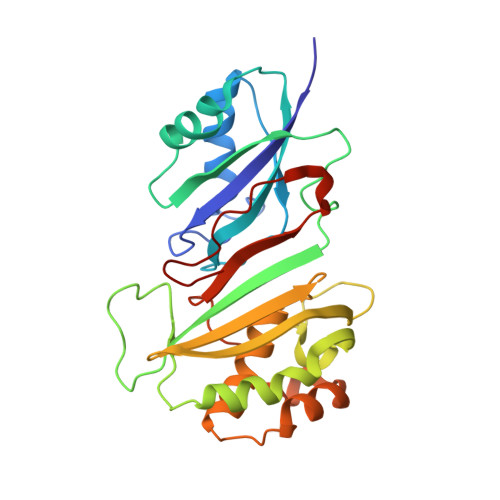The structural basis for tRNA recognition and pseudouridine formation by pseudouridine synthase I.
Foster, P.G., Huang, L., Santi, D.V., Stroud, R.M.(2000) Nat Struct Biol 7: 23-27
- PubMed: 10625422
- DOI: https://doi.org/10.1038/71219
- Primary Citation of Related Structures:
1DJ0 - PubMed Abstract:
Pseudouridine synthases catalyze the isomerization of specific uridines to pseudouridine in a variety of RNAs, yet the basis for recognition of the RNA sites or how they catalyze this reaction is unknown. The crystal structure of pseudouridine synthase I from Escherichia coli, which, for example, modifies positions 38, 39 and/or 40 in tRNA, reveals a dimeric protein that contains two positively charged, RNA-binding clefts along the surface of the protein. Each cleft contains a highly conserved aspartic acid located at its center. The structural domains have a topological similarity to those of other RNA-binding proteins, though the mode of interaction with tRNA appears to be unique. The structure suggests that a dimeric enzyme is required for binding transfer RNA and subsequent pseudouridine formation.
Organizational Affiliation:
Department of Biochemistry and Biophysics, University of California San Francisco, San Francisco, California 94143-0448, USA.

















